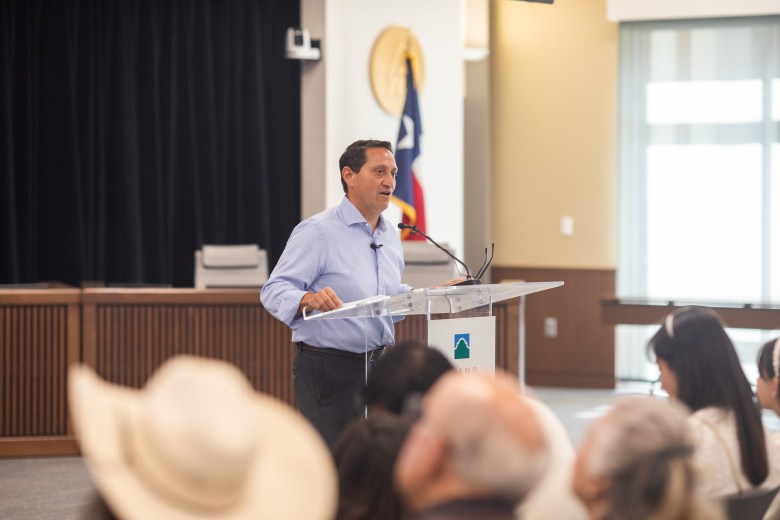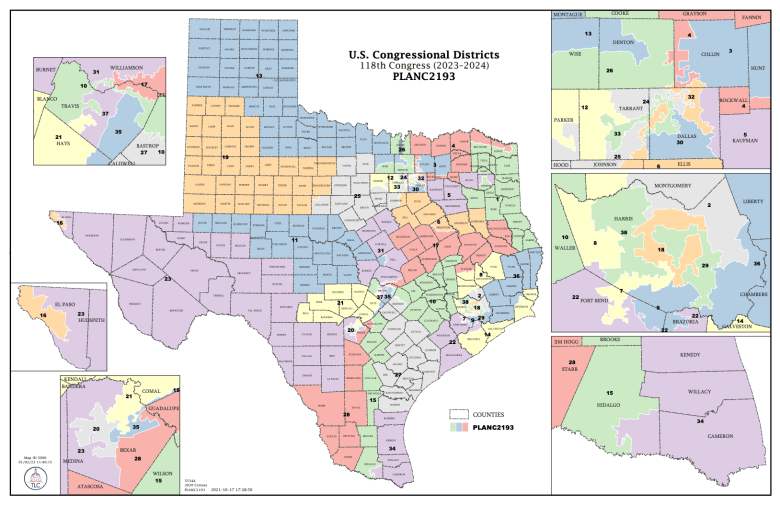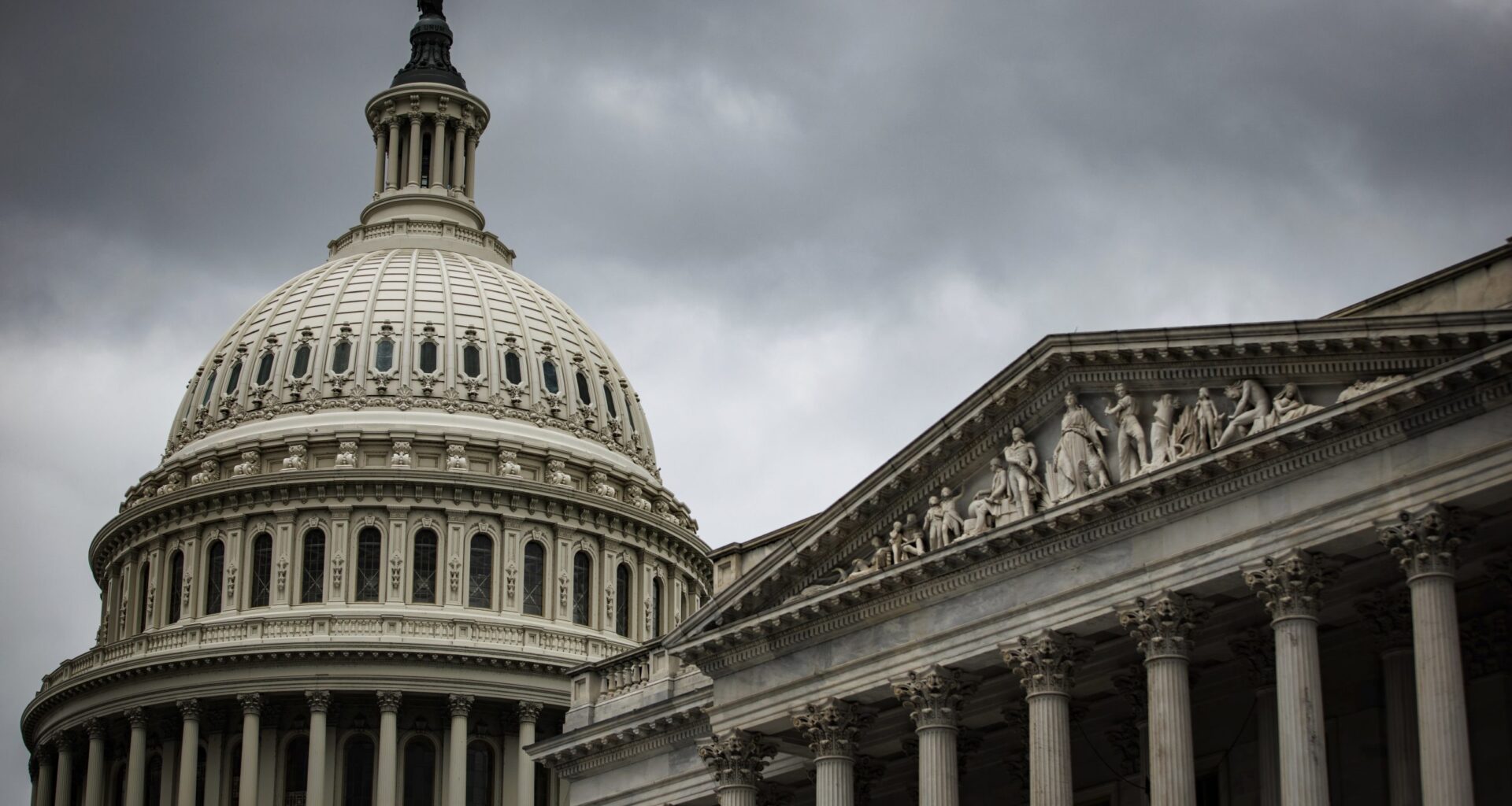Texas lawmakers will soon get to work drawing new congressional districts this summer — a move that could dramatically change what type of candidate succeeds in the districts that represent San Antonio in D.C.
The Trump administration has asked Texas’ Republican-led legislature to redraw the congressional maps so that as many as five of Texas’ 13 Democrat-held seats could be competitive for the GOP in 2026.
Bexar County currently has three elected Democrats and two Republicans, who, for the most part, face little political opposition in seats drawn overwhelmingly in favor of one party.
One exception is U.S. Rep. Henry Cuellar (D-Laredo), who has held his South Texas seat for decades, but in recent years has drawn some well-funded GOP opponents seeking to capitalize off President Donald Trump’s gains in the region.
Filing for reelection is approaching quickly, however, and any changes aimed at creating new opportunities for Republicans will almost certainly be felt by here in the home of some of the state’s last remaining Democrats.
“Guess whose districts they’re going to have to tweak if they want to make [Democrats’ districts] more competitive?” state Rep. Trey Martinez Fischer (D-San Antonio) said at a town hall on Saturday previewing the special session.
“Where do you think the Republicans are going to come? They’re coming from [U.S. Rep. Chip Roy’s (R-Dripping Springs)] district. They’re going to come from [U.S. Rep. Tony] Gonzales’ (R-San Antonio) district.”
Republicans currently control the White House, U.S. Senate and hold a 220-212 seat advantage in the U.S. House of Representatives, where the party out-of-power typically gains seats in the midterm.
Martinez Fischer is one of San Antonio’s longest-serving state House members, whose decades of experience in Democratic leadership includes multiple redistricting fights. Two other San Antonio-area Democrats will serve on the House committee overseeing this year’s new maps.
 Texas State Rep. Trey Martinez Fischer discusses the upcoming special session during a town hall at Alamo Colleges District headquarters on May 12. Credit: Vincent Reyna for the San Antonio Report
Texas State Rep. Trey Martinez Fischer discusses the upcoming special session during a town hall at Alamo Colleges District headquarters on May 12. Credit: Vincent Reyna for the San Antonio Report
Several states, including Texas in 2003, have redrawn their congressional districts outside of the 10-year census cycle.
But even some Republicans remain skeptical about what can be gained from revisiting maps their own party put into place just three years ago — a process that was already intended to optimize Republican gains.
“The difference between what was done before and 1752662588 is that … [in the past] the lines were drawn were drawn by a Democrat judge, not by the Republicans in the Texas House and Senate,” said Austin-based GOP political consultant Craig Murphy. “[In that instance], it did make sense that when they get political issues settled, the legislature had a chance to draw the lines. These lines were drawn just in 2022.”
Adding to the intrigue, last week Trump’s Department of Justice shocked political watchers with a letter asking lawmakers to also redraw racially gerrymandered districts in Houston and Fort Worth — addressing legal issues flagged by voting rights advocates who say voters of color were unfairly grouped together to dilute their power.
Drawing districts to minimize a political opponent’s influence is perfectly legal, but designing them to dilute the influence of a particular racial group is not.
Voting advocates’ case was heard by a federal court earlier this year but no ruling has been made, and few expected Republicans to take apart their own maps without a court’s intervention.
“Every [district] has to have the same amount of constituents, so whatever they do in Houston and Fort Worth will come to San Antonio,” Martinez Fischer said.
Filing for the March primary — the first step of a congressional race — opens on Nov. 8.
The legislature will begin work on the new maps in a special session starting July 21.
Here’s a look at how San Antonio’s congressional seats could change ahead of the 2026 midterm.

Texas’ 28th congressional district
Represented by U.S. Rep. Henry Cuellar (D-Laredo), this district is considered squarely the crosshairs of Republicans’ redistricting effort.
It starts in Laredo and stretches north to San Antonio’s East Side, where voters have long sent Democrats to Congress. But Trump carried the district with 53% of the vote in 2024, giving Republicans reason to believe it could be competitive this year — particularly if more GOP voters are added.
Even without changes to the district’s makeup, Cuellar and fellow South Texas U.S. Rep. Vicente Gonzalez (D-McAllen) are already top targets for national Republicans eager to capitalize on districts where they’re making gains with Hispanic voters.
Several GOP candidates have already lined up to run in Texas’ 28th, including one who recently left the Democratic Party.
Cuellar considers his decades of success in South Texas to be transcendent of party politics. He was indicted on bribery and money laundering charges months out from the 2024 election and still reelected with 53% of the vote.
Texas’ 21st & 23rd congressional districts
San Antonio’s two Republican-held congressional seats, represented by U.S. Reps. Chip Roy (Dripping Springs) and Tony Gonazles (R-San Antonio), could be among those losing GOP voters to make neighboring districts more competitive.
Roy represents Texas’ 21st congressional district, stretching from the Hill Country into San Antonio’s North Side, and considered deeply conservative territory. Trump carried it with 61% of the vote in 2024, and Roy, a leader in the House conservative wing, performed even better.
Gonzales’ 23rd congressional district borders Roy to the south and west — spanning a massive swath of U.S.-Mexico border.
After years of fighting to hold Texas’ 23rd congressional district, Republicans made it safer for their party during the 2021 redistricting process.
Since then, the district traded GOP centrist Will Hurd for the more conservative U.S. Rep. Tony Gonzales (R-San Antonio), who last year only narrowly survived a challenge from his right in a district Trump carried the district with 57% of the vote.
Gonzales and Roy have said little about the redistricting plan.
“You don’t get guarantees when you draw lines,” Murphy said. “Every single congressional district that changes hands from one party to the other, it’s because [it worked] when they drew it, and at some point it didn’t work anymore.”
Texas’ 20th & 35th congressional districts
Most of San Antonio’s downtown is encompassed in two bright blue districts, represented by U.S. Reps. Greg Casar (D-Austin) and Joaquin Castro (D-San Antonio).
Texas’ 35th congressional district stretches from Austin down to San Antonio along Interstate 35 in a barbell shape designed to surgically capture Democratic enclaves.
Its voters chose Casar, a progressive newcomer, after longtime Democratic Rep. Lloyd Doggett moved to a newly created Austin-centric district in 2022. Since then Casar has faced little political opposition in a district that gave Democratic presidential nominee Kamala Harris 66% of its vote.
Texas’ 20th congressional district, encompassing San Antonio’s West Side, also hasn’t drawn much interest from Republicans in recent years. Castro remains popular and ran unopposed for a seventh term last year.
His seat could present a rare opening on the map, however, if he runs for U.S. Senate instead of reelection.
The district gave Harris 60% of its vote in 2024.
